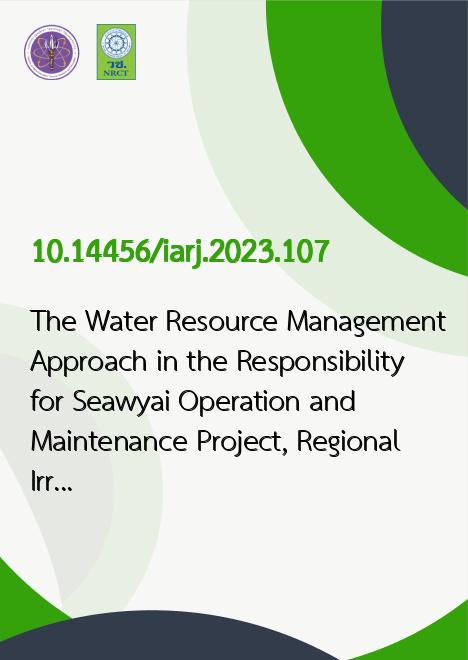
|
The Water Resource Management Approach in the Responsibility for Seawyai Operation and Maintenance Project, Regional Irrigation Office 6 |
|---|---|
| รหัสดีโอไอ | |
| Creator | Theerapong Jalernphong |
| Title | The Water Resource Management Approach in the Responsibility for Seawyai Operation and Maintenance Project, Regional Irrigation Office 6 |
| Publisher | DR.KEN Institute of Academic Development and Promotion. |
| Publication Year | 2566 |
| Journal Title | Interdisciplinary Academic and Research Journal |
| Journal Vol. | 3 |
| Journal No. | 2 |
| Page no. | 813-834 |
| Keyword | Management Approach, Water Resource, Seawyai Operation and Maintenance Project |
| URL Website | https://so03.tci-thaijo.org/index.php/IARJ/about |
| Website title | https://so03.tci-thaijo.org/index.php/IARJ/article/view/265865 |
| ISSN | 2774-0374 |
| Abstract | The changes in the human world situation over the past two decades have resulted in the expansion of the economy and industry, and the human water demand has increased exponentially, especially water for agriculture and energy. However, Thailand's water management still has loopholes, a lack of unity, and a lack of clear rules for the allocation of water resources. Most remain under a free access system, one that is unfair does not encourage optimal use and does not contribute to the sustainable use of water resources. Therefore, this research has the objectives of 1) causal factors affecting the water resource management approach. 2) To establish guidelines for water resource management. And 3) To try and evaluate water resource management approaches by comparing pre-development with post-implementation conditions. This research was conducted in the area responsible for Siew Yai River Transmission and Maintenance Project, Irrigation Office No. 6, Northeastern Thailand. This research used a mixed research method using Focus Group Discussion, Brainstorming to collect data. The target sample consisted of 5 academicians, 12 government officials, and 9 people in the water service area of the Siew Yai River Transmission and Maintenance Project, 6th Irrigation Office, totaling 26 people. Then the results from group discussions and brainstorming were used to create guidelines for water resource management, After that, it was evaluated by experts, and applied to trials with 30 farmers who use water in the area of responsibility of the Siew Yai Irrigation and Maintenance Project. The data collection tool of the trial was a questionnaire. Statistics used in data analysis were mean, percentage, and standard deviation. The results found that (1) The causal factors affecting the water resource management guidelines were found that the overall and individual aspects were at a moderate level. Sort the averages from highest to lowest as follows; occupation, satisfaction, participation, water use, and water management respectively. (2) Guidelines for water resource management found that all 10 activities were appropriate for practical implementation, consisting of; Knowledge of irrigation water user groups, growing crops that use less water, new theory agriculture, aquaculture, tilapia, shrimp, participation in irrigation work, creating a volunteer spirit together, helping each other, Motivation, Publicize water use worthily, water management in Siew Yai River, and a development plan for the Siew Yai River transmission and maintenance project, which such activities are appropriate. And (3) The results of comparing the differences between the scores before and the experimental water resource management approach were found to be significantly different at the .05 level, The score after the operation was higher than before the operation. It was shown that after implementing the water resource management approach, the management, participation, occupation, water use, and satisfaction improved as a set. |